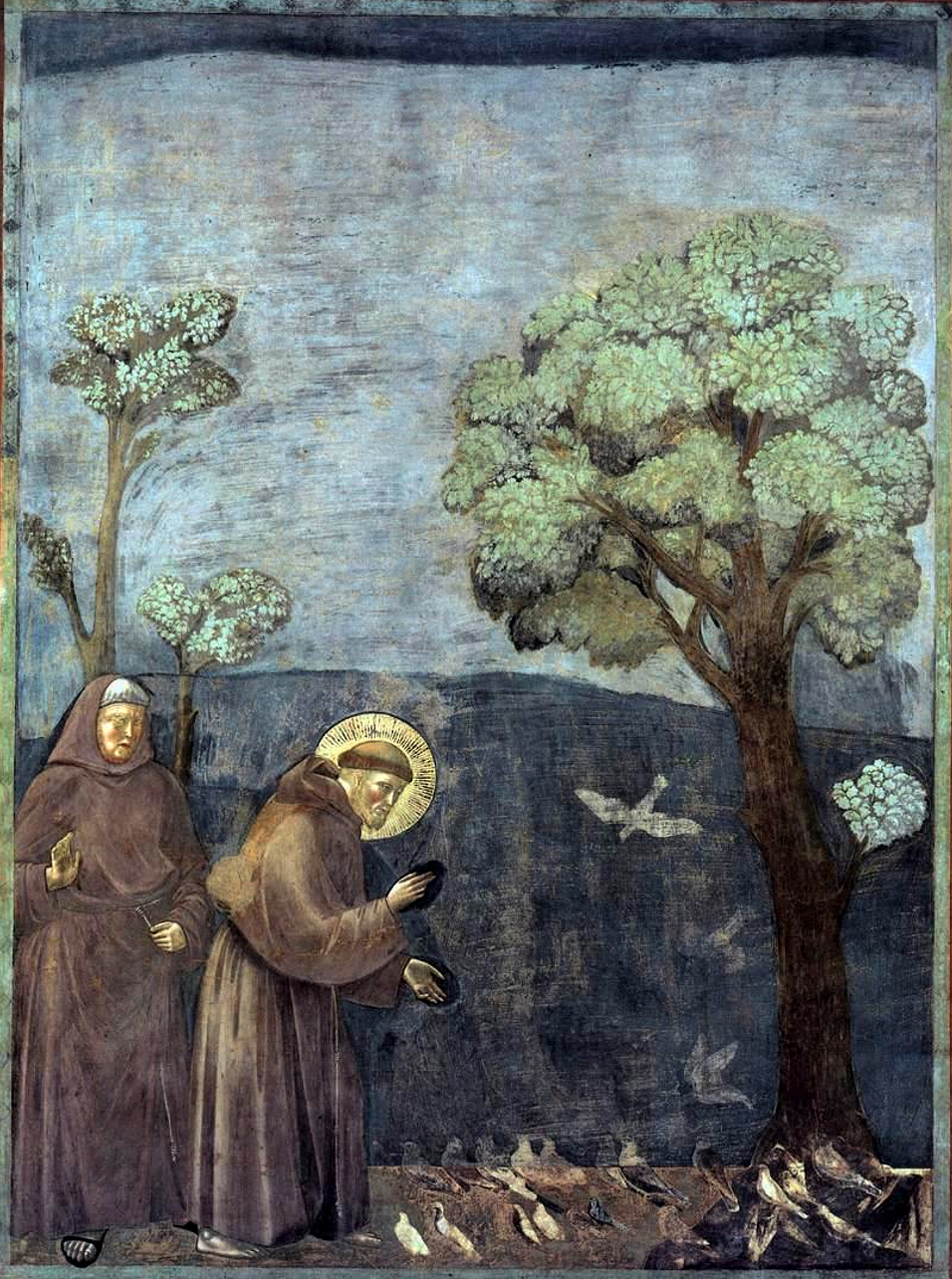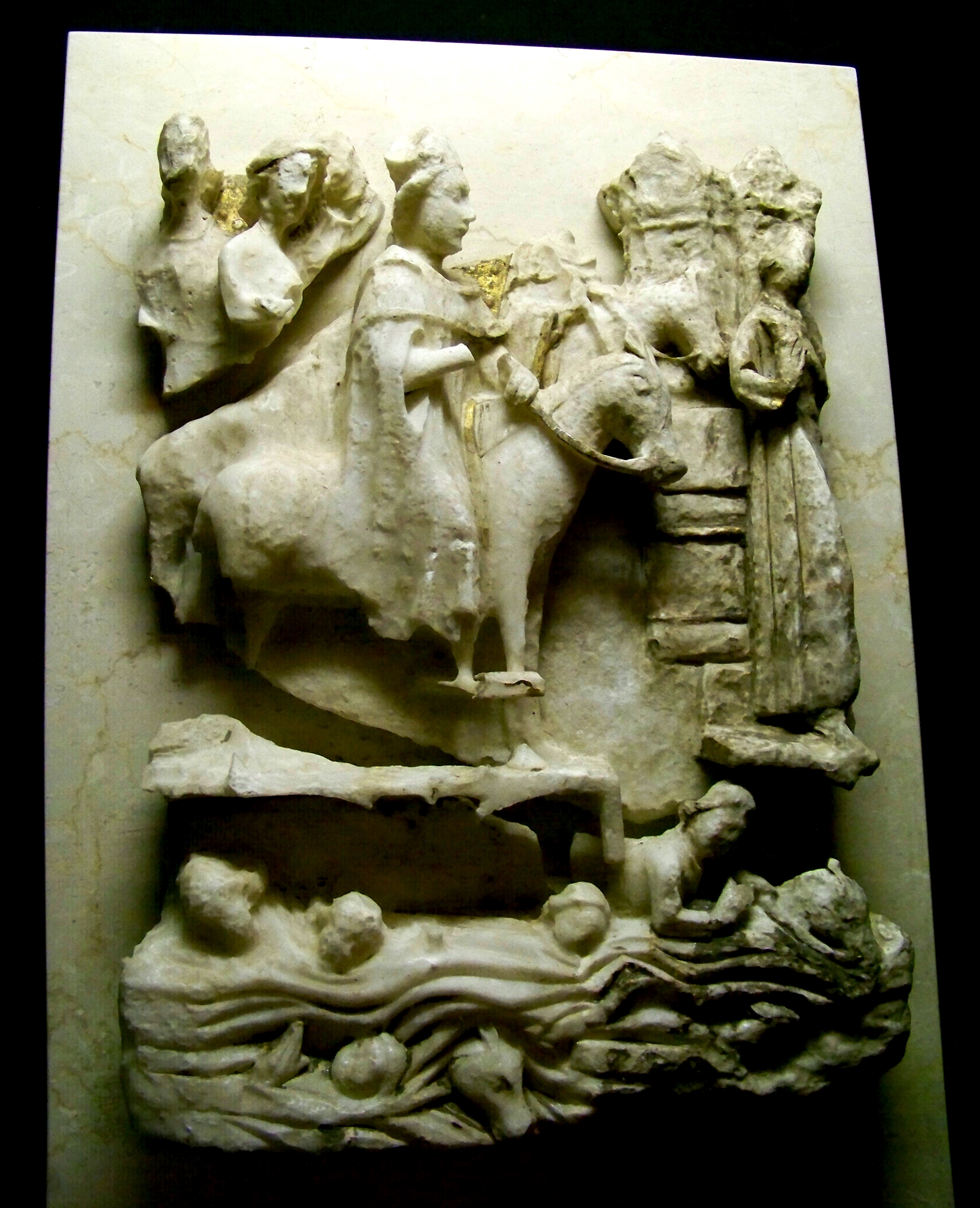|
Saint William (other)
Saint William may refer to: Saints * Saint William of Gellone (755–812 or 814), second Count of Toulouse * Saint William of Volpiano (962 - 1031), monastic reformer and architect * Saint William Firmatus (1026 - 1103), hermit * Saint William of Montevergine (d. 1142), abbot * Saint William of Norwich (c.1132 – 1144) * Saint William of York (d. 1154), Archbishop * Saint William of Maleval or Saint William the Great (d. 1157), hermit * Saint William of Perth, the patron saint of adopted children, killed by his adoptive son c. 1201 * Saint William of Æbelholt (c. 1125 - 1203), also known as William of Paris or William of the Paraclete, French ecclesiastic active in Denmark * Saint William of Donjeon (c.1155 – 1209), also known as William of Bourges, William the Confessor or William Berroyer, Archbishop of Bourges See also * Saint-Guillaume (other) Saint Guillaume is the French equivalent for Saint William. It may refer to the following place names: * Saint-Guillaume, ... [...More Info...] [...Related Items...] OR: [Wikipedia] [Google] [Baidu] |
William Of Gellone
William of Gellone ( 755 – 28 May 812 or 814), the medieval William of Orange, was the second Duke of Toulouse from 790 until 811. In 804, he founded the abbey of Gellone. He was canonized a saint in 1066 by Pope Alexander II."William of Aquitaine, St." Encyclopedia.com. Retrieved on 2014-01-17. In the tenth or eleventh century, a Latin hagiography, the ''Vita sancti Willelmi'', was composed. By the twelfth century, William's legend had grown. He is the hero of an entire cycle of '' chansons de geste'', the earliest of which is the '' Chanson de Guillaume'' of about 1140. In the ''ch ... [...More Info...] [...Related Items...] OR: [Wikipedia] [Google] [Baidu] |
William Of Volpiano
Saint William of Volpiano (Italian: ''Guglielmo da Volpiano''; French: ''Guillaume de Volpiano'', also of Dijon, of Saint-Benignus, or of Fécamp; June/July 962 – 1 January 1031) was a Northern Italian monastic reformer, composer, and founding abbot of numerous abbeys in Burgundy, Italy and Normandy. Life and career Not much is known about him. The main source is a '' Vita'' of the monk Raoul Glaber, a novice who accompanied William and who sometimes regarded his master as a rival, but also as a mentor who encouraged his work as a chronicler. William was born on the family citadel on the island of San Giulio, Lake Orta, Novara, Piedmont. The son of Count Robert of Volpiano, he was born during an assault on the citadel by the Emperor Otto. The assault being successful, Otto became the sponsor and patron of Count Robert's son. The fourth son of Count Robert, in 969, at the age of seven, he began his education at the Benedictine abbey at Locadio, Vercelli. He became a monk ... [...More Info...] [...Related Items...] OR: [Wikipedia] [Google] [Baidu] |
William Firmatus
William Firmatus (french: Guillaume Firmat; 1026–1103) was a Norman hermit and pilgrim of the eleventh century, now venerated as a saint in the Catholic Church. Life William Firmatus was a canon and a physician of Tours, France. Following a spiritual prompting against greed, he gave away all his possessions to the poor. He lived a reclusive life with his mother until he entered a hermitage near Laval, Mayenne. He spent the rest of his life on pilgrimages and as a hermit at Savigny and Mantilly. According to legend, he saved the people of Choilley-Dardenay during drought by striking the ground with his pilgrim's staff, which caused a spring of water to bubble up. He died in 1103 of natural causes. Relationship with wild animals William is especially noted for his love of wildlife and the unusual level of communication he seemed to have with animals. This was so much so that the local people used to ask his help with animals that raided their crops. One particular sto ... [...More Info...] [...Related Items...] OR: [Wikipedia] [Google] [Baidu] |
William Of Montevergine
William of Montevergine, or William of Vercelli, ( it, Guglielmo) ( la, Gulielmus) (1085 – 25 June 1142), also known as William the Abbot, was a Catholic hermit and the founder of the Congregation of Monte Vergine, or " Williamites". He is venerated as a saint by the Roman Catholic Church. Life He was born in 1085 into a noble family of Vercelli in northwest Italy and brought up by a relation after the death of his parents. He undertook a pilgrimage to Santiago de Compostela. On his pilgrimage to Compostela, William asked a blacksmith to make an iron implement that would encircle his body and increase his suffering, and he wore it throughout the pilgrimage. After he returned to Italy, he intended to go to Jerusalem and for this purpose he reached South Italy, but he was beaten up and robbed by thieves. William considered this misfortune a sign of God's will to stay in South Italy and spread the message of Christ. Because of this, istoria-montevergine p. 5 he decided not to ... [...More Info...] [...Related Items...] OR: [Wikipedia] [Google] [Baidu] |
William Of Norwich
William of Norwich (2 February 1132 – 22 March 1144) was an English boy whose disappearance and killing was, at the time, attributed to the Jewish community of Norwich. It is the first known medieval accusation against Jews of ritual murder. William was an apprentice tanner who regularly came into contact with Jews and visited their homes as part of his trade. His murder remains unsolved; the local community of Norwich attributed the boy's death to the Jews, though the local authorities would not convict them for lack of proof. William was acclaimed as a saint in Norwich, with miracles attributed to him. William's story was told in ''The Life and Miracles of St William of Norwich'', a multi-volume Latin work by Thomas of Monmouth, a monk in the Norwich Benedictine monastery. Thomas started ''The Life'' in 1149/50; he completed volume seven by 1173. Augustus Jessopp (1823–1914), one of the editors of the first printed edition of Thomas' work, describes Thomas as belongin ... [...More Info...] [...Related Items...] OR: [Wikipedia] [Google] [Baidu] |
William Of York
William of York (late 11th century – 8 June 1154) was an English priest and twice Archbishop of York, before and after a rival, Henry Murdac. He was thought to be related to King Stephen of England, who helped to secure his election to the province after several candidates had failed to gain papal confirmation. William faced opposition from the Cistercians, who after the election of the Cistercian Pope Eugene III, had William deposed in favour of a Cistercian, Murdac. From 1147 until 1153, William worked to be restored to York, which he achieved after the deaths of Murdac and Eugene III. He did not hold the province long, dying shortly after his return, allegedly from poison in the chalice he used to celebrate Mass.Emma J. Wells, "Making Sense of Things", ''History Today'', Vol. 69, No. 5 (May 2019), p. 40 Miracles were reported at his tomb from 1177. He was canonised in 1226. Early life Born William fitzHerbert in York, William was the son of Herbert of Winchester, or Herbe ... [...More Info...] [...Related Items...] OR: [Wikipedia] [Google] [Baidu] |
William Of Maleval
William of Maleval (french: Guillaume de Malavalle), also known as William the Hermit or William the Great, was a French Christian and the founder of the Catholic congregation of Williamites, an early branch of the Hermits of St. Augustine. He was beatified in 1202. Sources The account of his life, written by his disciple Albert, who lived with him during his last year at Maleval, has been lost. Written accounts of his life by Theodobald, or Thibault, given by the Bollandists, is unreliable because it has been interpolated with the lives of at least two other Williams.Webster, Douglas Raymund. "St. William of Maleval." The Catholic Encyclopedia Vol. 15. New York: Robert Appleton Company, 1912. 30 May 2021 Life A Frenchman by birth, he spent some years ...[...More Info...] [...Related Items...] OR: [Wikipedia] [Google] [Baidu] |
William Of Perth
Saint William of Perth (died c. 1201), also known as Saint William of Rochester was a Scottish saint who was martyred in England. He is the patron saint of adopted children. Following his death, he gained local acclaim and was canonised by Pope Alexander IV in 1256. Life Little is known about the life of William, and practically all information regarding him comes from the ''Nova Legenda Anglie''. He was born in Perth, at that time one of the principal towns of Scotland. In youth, he had been somewhat wild, but on reaching manhood he devoted himself wholly to the service of God. A baker by trade (some sources say he was a fisherman), he was accustomed to setting aside every tenth loaf for the poor. He went to Mass daily, and one morning, before it was light, found on the threshold of the church an abandoned child, whom he adopted and to whom he taught his trade. Later he took a vow to visit the Holy Places, and, having received the consecrated wallet and staff as a Palmer, ... [...More Info...] [...Related Items...] OR: [Wikipedia] [Google] [Baidu] |
William Of Æbelholt
William of Æbelholt (also known as Vilhelm of Æbelholt, William of Eskilsø and William of Paris) (d. Easter Sunday, 1203) was a French-born churchman of Denmark. Early life William was born of a noble French family and educated by his uncle Hugh, forty-second abbot of Saint-Germain-des-Prés at Paris, and, having been ordained subdeacon, received a prebend in the church of Sainte-Geneviève-du-Mont."St. William of Paris." The Catholic Encyclopedia Vol. 15. New York: Robert Appleton Company, 1912. 18 Dec.ember 2021 William reportedly sought entry into a stricter house (either a or a |
William Of Donjeon
Guillaume de Donjeon (c. 1140 – 10 January 1209) was a French Roman Catholic prelate who served as the Archbishop of Bourges from 1200 until his death. He served as a canon in Soissons and Paris before he entered the Order of Grandmont. Sometime later he entered the Cistercians. He was known to practice austerities such as abstaining from meat and wearing a hair shirt. He was also known for his deep devotion to the Blessed Sacrament and for his conversion of sinners. He oversaw the construction of the new archdiocesan cathedral that his predecessor had authorized and in which he himself would be buried. It had been claimed that he performed eighteen miracles in life and a further eighteen in death. His canonization was celebrated under Pope Honorius III in 1218 and he was named as the patron saint for the Parisian college. Life Guillaume de Donjeon was born about 1140 at the castle of Arthel near Nevers, into the ancient family of the Counts of Nevers. He was one of eight ... [...More Info...] [...Related Items...] OR: [Wikipedia] [Google] [Baidu] |



